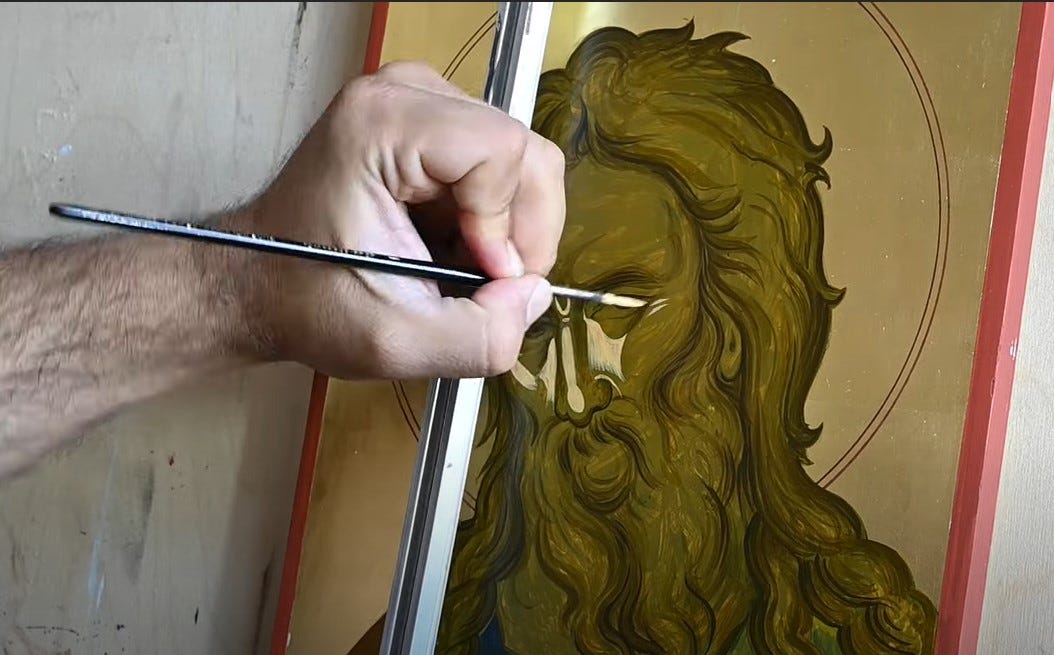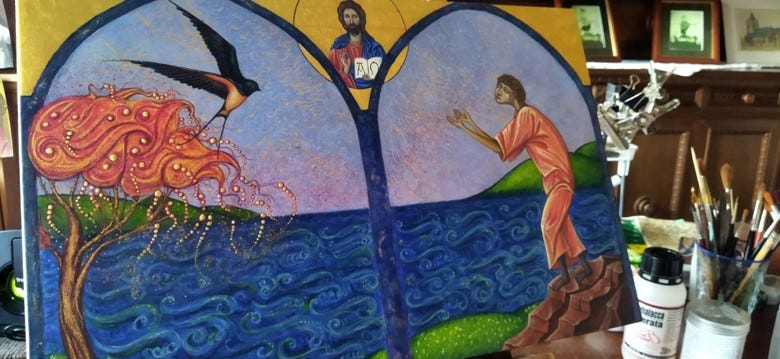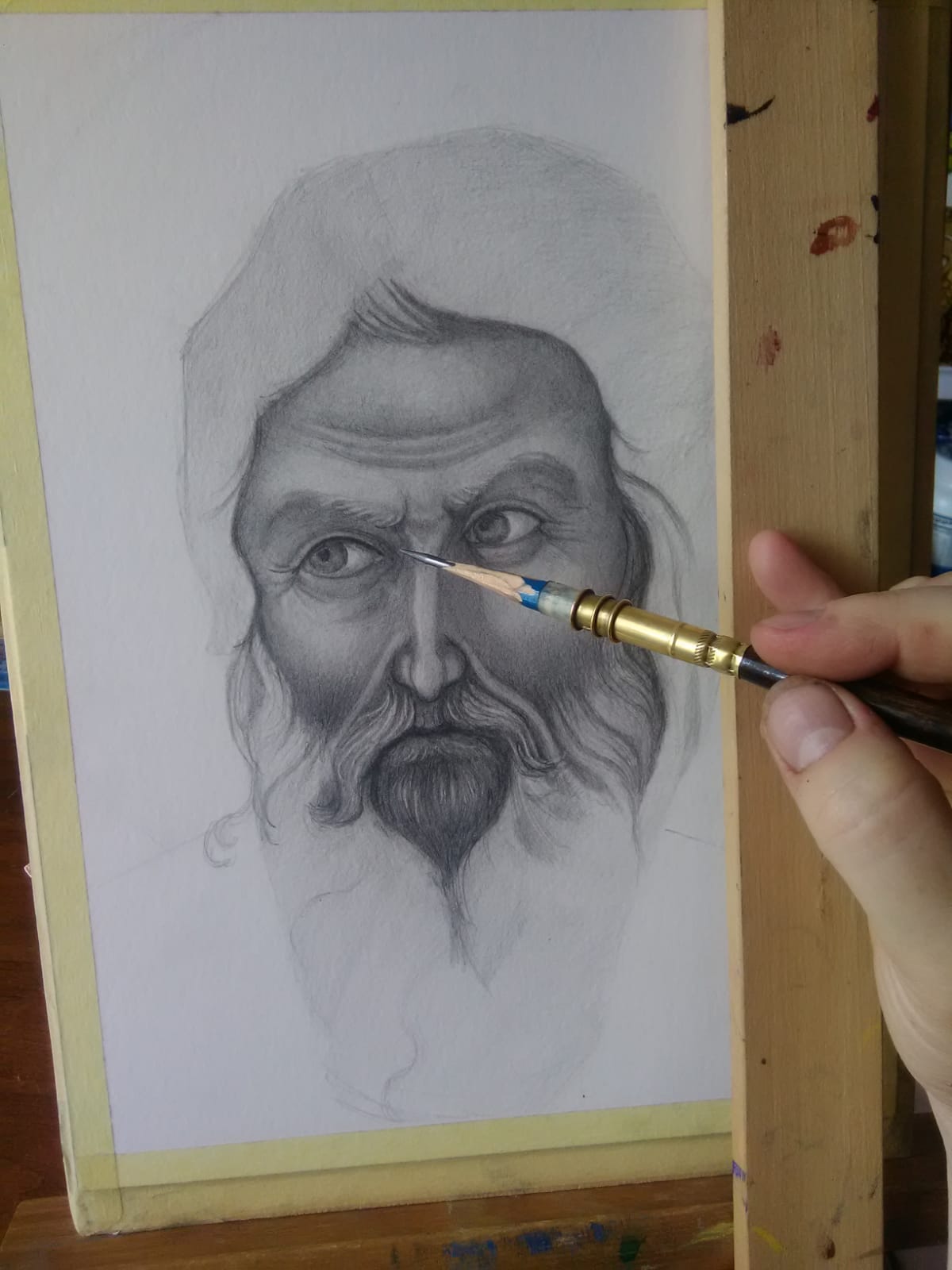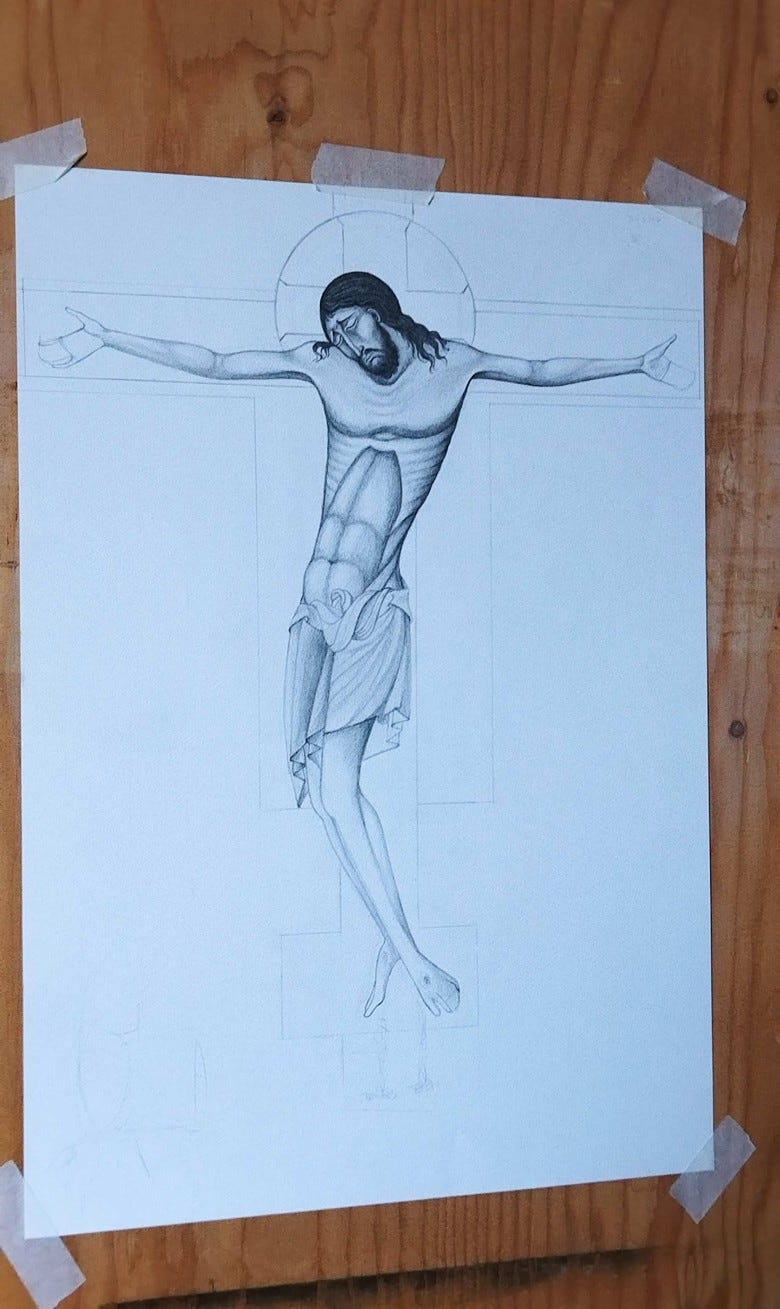How to live in a timeless world: advice for sacred artists
07-12-2024
Sacred Art - forget the worldThis post for all subscribers is from my studio blog, from 2021, where I talk about how to forget your fears and dive into sacred art. I’m on holiday this week, so for the next few posts, I’m re-posting some older stuff … The Sacred Images Project looks at art history and Christian culture through the lens of the first 1200 years of Christian sacred art.A big thank you to all who have signed up as free subscribers, and hello to our new paid members. Your contributions not only make it financially possible for me to continue this work, but are a tremendous encouragement to me that other people out there take these subjects as seriously as I do. This is my full time work, and I rely upon subscriptions and patronages from readers like yourself to pay bills and keep body and soul together. You can subscribe for free to get one and a half posts a week. For $9/month you also get a weekly in-depth article on this great sacred patrimony, plus extras like downloadable ebooks, high res images, photos, videos and podcasts (in the works), as well as voiceovers of the articles, so you can cut back on screen time.I hope you will consider taking out a paid subscription to help me continue and develop this work.(For those in straightened financial situations, fixed incomes and vowed religious etc., I’m happy to help. Drop me an email explaining and I can add you to the complimentary subscribers’ list.)The other way you can help support the work is by signing up for a patronage through my studio site, where you can choose for yourself the amount you contribute. Anyone contributing $9/month or more there will (obviously) receive a complimentary paid membership here.You can also take a scroll around my online shop where you can purchase prints of my drawings and paintings and other items.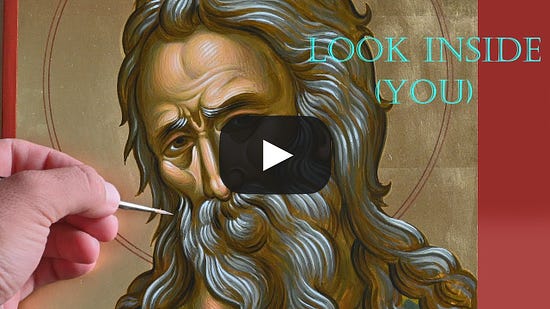 I know there are starting to be a few readers here who are following and growing interested in trying this kind of work themselves. So, I'll "interpret" some of these pieces of advice for us Latins who might need a little more help, and add some thoughts. - "Spend time in the studio painting." -The oldest piece of advice for all creative people. As DC Fontana¹ said, "The secret to great writing is the application of the seat of the pants to the seat of the chair." - "Find a mentor." -For Latins and other people who aren't plugged into the world of Orthodox liturgical arts this might be tricky. But thanks to the boom in online teaching, it's not impossible. Learn everything you can through reading and practicing and experimenting, and get yourself hooked up if you can to FB groups and Patreon or on any of the growing number of platforms where iconographers are reaching out to potential students. 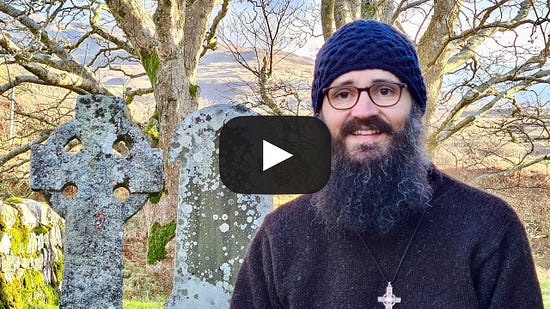 Also we can follow the general advice we had a while ago from Fr. Seraphim Aldea who said that if you can't find a "spiritual father" (or as we would say a spiritual director) - which in our terrible times can be very difficult indeed - you can study the ancient fathers of the Church, read the lives of the saints. And this advice can be the same for iconographers. Find out the names of the great masters of the past and study them deeply. And this is the great appeal for me. Study. Research. Finding out the different schools and national styles of iconography and sacred art. Learning the difference between the Cretan and Macedonian and Greek and Russian and Coptic schools. Learning exactly how Italy's long subordination to the Byzantine Empire and its art developed into the great styles of the Italian Trecento, Sienese and International Gothic schools of painting. In our time, the internet is really your best resource (especially as we all sail merrily along to our next set of illegal lockdowns). There really is a ton of stuff available online - including those super high-definition, high-resolution photos so many museums are starting to produce. And there's a lot more specifically about Orthodox and Byzantine iconography available now than there ever has been before. (Try Orthodox Arts Journal as a place to get started learning the most famous names and movements and histories). Even for complete greenhorns like me, there was enough material just lying around on the internet to get started learning the general parameters of the field, including the various debates and even controversies. Don't let yourself be intimidated. Talk to people as much as you can, and approach the experts with a humble demeanour. People love to talk about the things they love, and if you come from a position of truly wanting to learn - and acknowledging that you might know next to nothing - for the best of the iconographers and sacred artists this is music to their ears. Most of them are very approachable people. - "Indulge your curiosity." -Try things out. Experiment. Investigate. A lot of what I have found beneficial in this work is the scope it gives for investigation, research, experimentation and learning. The more I dig into technique, and history and meaning, the more I find there is to discover. The larger and larger gets to be the scope of the field. I spend a lot of time looking very intensely at existing works, doing drawings and sketches and just trying to figure it out. So much more fun than crosswords. - "Let your work seep out into all the areas of your life." -It took me all this time, since November 2019, to really start to think of myself primarily as a painter. This is what I do now and this is what fills my mind and my attention and my days. And having that become slowly the Main Thing it definitely is naturally flowing out into all the other aspects of my daily life. And this helps me very much to deal with the scariness of the world right now. Things are weird and often going in directions I can't understand, but this work is something grounding. I was watching a video interview with Jordan Peterson today and he said a big problem is "keeping up" with technology. Just the other day someone sent me a new platform for messaging and groups - something called Telegram - that a lot of the people I know are starting to use. But I can't. I'm already using about five different things. I've just barely started using Whatsapp, and still haven't got the knack of it. Why do we all have to keep switching accounts and adding new things every six months? But this work - this extremely ancient, transcendent practice - isn't something to chase frantically, to barely keep up with. It's more like being given the key to an ancient chamber full of treasure. It might, in fact probably will, take me the rest of my life to explore it. But it isn't going anywhere. There's nothing to "keep up" with or to chase. There's just mastery to pursue, knowledge to accumulate, and the joy of learning.
None of the things I'm learning now are going to go obsolete faster than I can learn them. In fact, these techniques haven't gone "obsolete" in 5000 years. Focusing on these ancient, timeless patterns and secrets - this fascination - allows all the rest of that artificial Modernian nonsense to fade into the background. Things that flash in and out of fashion in a matter of weeks and months? When you're looking at these ancient, timeless things, you don't even notice. The more you immerse yourself in timeless things, the less the things of time interest you. "Accept the invisible." -The creation of sacred art - particularly iconography - is a work of the Interior Life. The ancient writers all accepted that there is something inherently connected to the Divine in making art. But more than any other kind of artistic work, the creation of sacred art specifically is a pursuit of something "invisible," a kind of bridge between worlds. Sacred art connects the sub-creator to the Creator. Combine it with a steady life of liturgical prayer - the Divine Office - even in a small way, and something will happen to you that I can't describe. It has to be experienced. But it changes you. And here's something funny, because it is so deep, so steady, so ancient and timeless, you end up feeling like you are floating in a way, suspended in timelessness yourself. You start to lose that sense of anxiety, the "fear of missing out," that keeps us all distracted. Your mind calms and starts to forget itself, and all the noise and nonsense of the world recedes. Things start to fall into a much larger perspective; you are doing something very, very large, and ancient and so saturated with meaning it will fill the gaze of your whole self, all your faculties. Mix it with the practice of the Divine Office and it becomes as deep and integral a part of a "life of prayer" - that is, of our pursuit of the Ultimate Real. ~ Engage in this work, and you will soon find yourself on an unimaginably ancient path the existence of which very few other people can even discern. It renders the Shouting and Arguing World completely unimportant, silly, easy to leave behind. I feel almost as if I have been captured, hypnotised in a way, my attention has been caught by something so much larger, more beautiful, more fascinating and entrancing than any of the stuff people think is important that I find I can barely stand to drag myself away from it. And the more you allow this work to pick you up and carry you along, the more you will be at peace with the world and with yourself.
1
Script writer for Star Trek, the original series. You’re currently a free subscriber to The Sacred Images Project: Early Christian Art and Culture. To see all the posts, deep dives, videos, chats and receive access to special downloads, upgrade your subscription. It’s just $9/month. |

